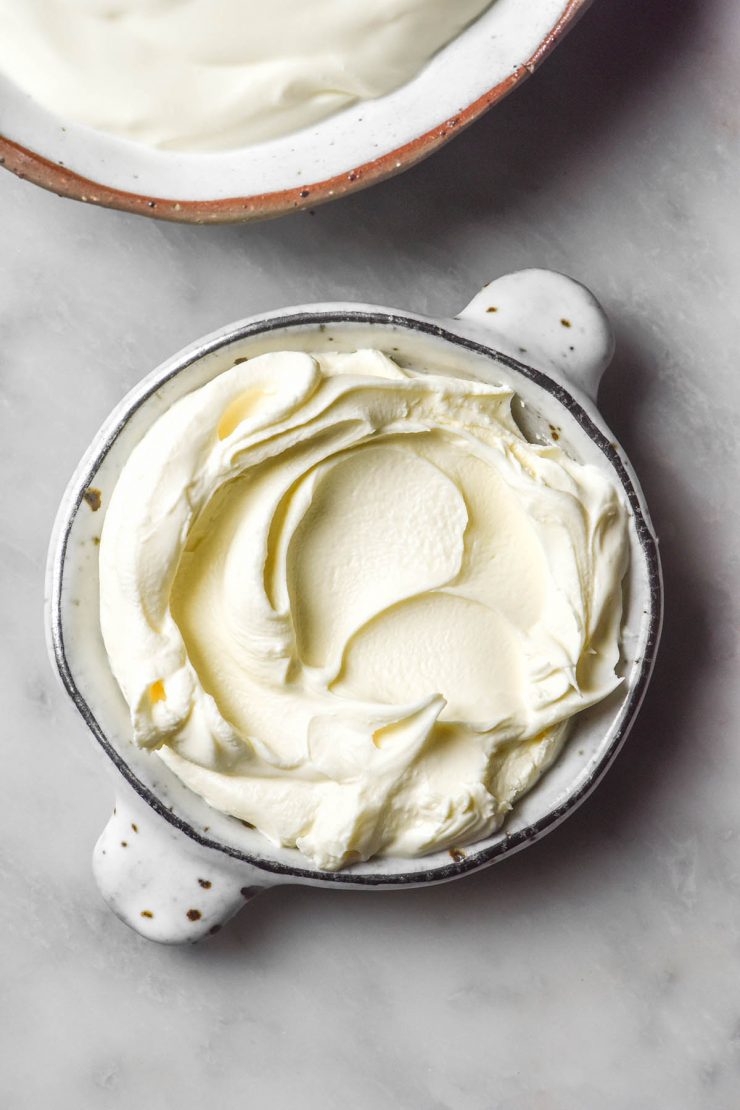
Although we are very lucky with the lactose free dairy products available in Australia, one of my main gripes is lactose free sour cream. For whatever reason, it is only sold in ‘light’ varieties. It’s watery, thin and nothing like the thick and delicious full fat sour cream option that normal people get to eat. With this in mind, I decided to set out and develop my own lactose free sour cream recipe.
Lactose free sour cream recipe
Lactose free sour cream is easy enough to make. All it takes is cream, potentially some milk (depending on what cream you use) some lactase drops, vinegar and time.
First, we need to add the lactase drops to cream (at least 35% fat). If you can find a brand without any thickeners, great! If not, it will still work.
The lactase drops will get to work consuming the lactose in the cream. After 24-48 hours, the lactose content of your cream will be significantly reduced (more on this later).
After leaving the cream and lactase for 24-48 hours in the fridge, it is time to add the acid (vinegar or lemon juice). This coagulates the cream and kickstarts the fermentation process. The cream is then left on the bench (yes, on the bench) for 24-48 hours. During this time the fermentation occurs and the sour cream thickens. Once you can see it has thickened considerably, it’s ready! Simply return it to fridge overnight and you will have thick, tangy and delicious lactose free sour cream.
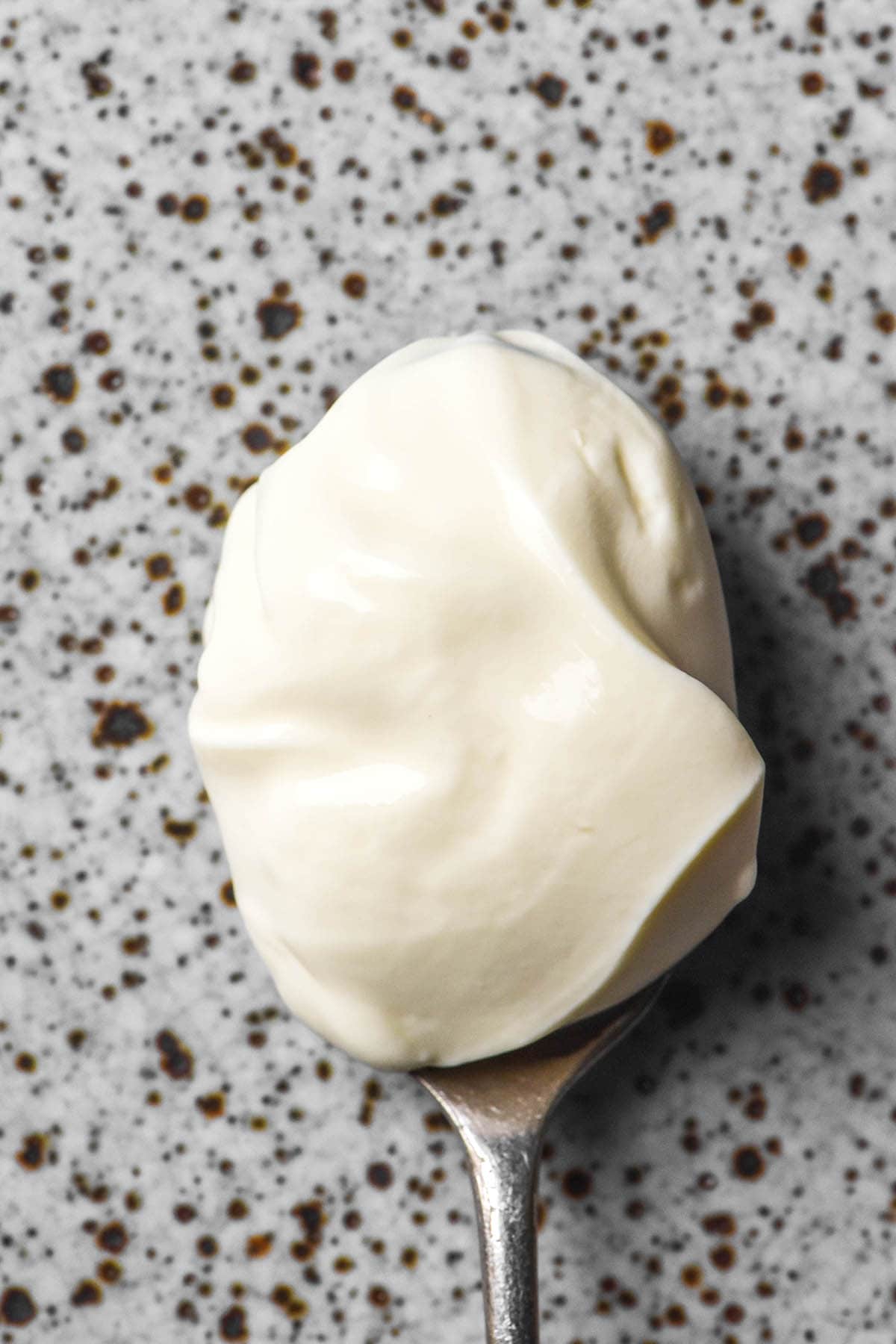
How is sour cream made?
In researching this recipe, I came across many angry commenters who rated recipes as 1 star because they claimed the recipe did not make ‘real sour cream’. Sour cream can be cultured or acidified. We are making the latter acidified version, which is still sour cream. This is because acidified sour cream still ferments on the bench, so it still has the cultures that a cultured sour cream does. The difference is that we are not adding manufactured cultures, we’re creating them ourselves.
Traditional sour cream was made by leaving the cream skimmed off milk to sit at room temperature. The cultures naturally occurring in the milk (lactic acid bacteria) ferment the cream which sours it, thickens it and preserves it.
Modern day store bought sour cream is made by adding lactic acid bacteria. Lactic acid can be manufactured and added to food or it can be naturally cultivated.
Cultured sour cream requires store bought cultures to be added, whereas acidified sour cream just needs an acid. Most home cooks have vinegar in their pantry, which is why we are making the acidified version.
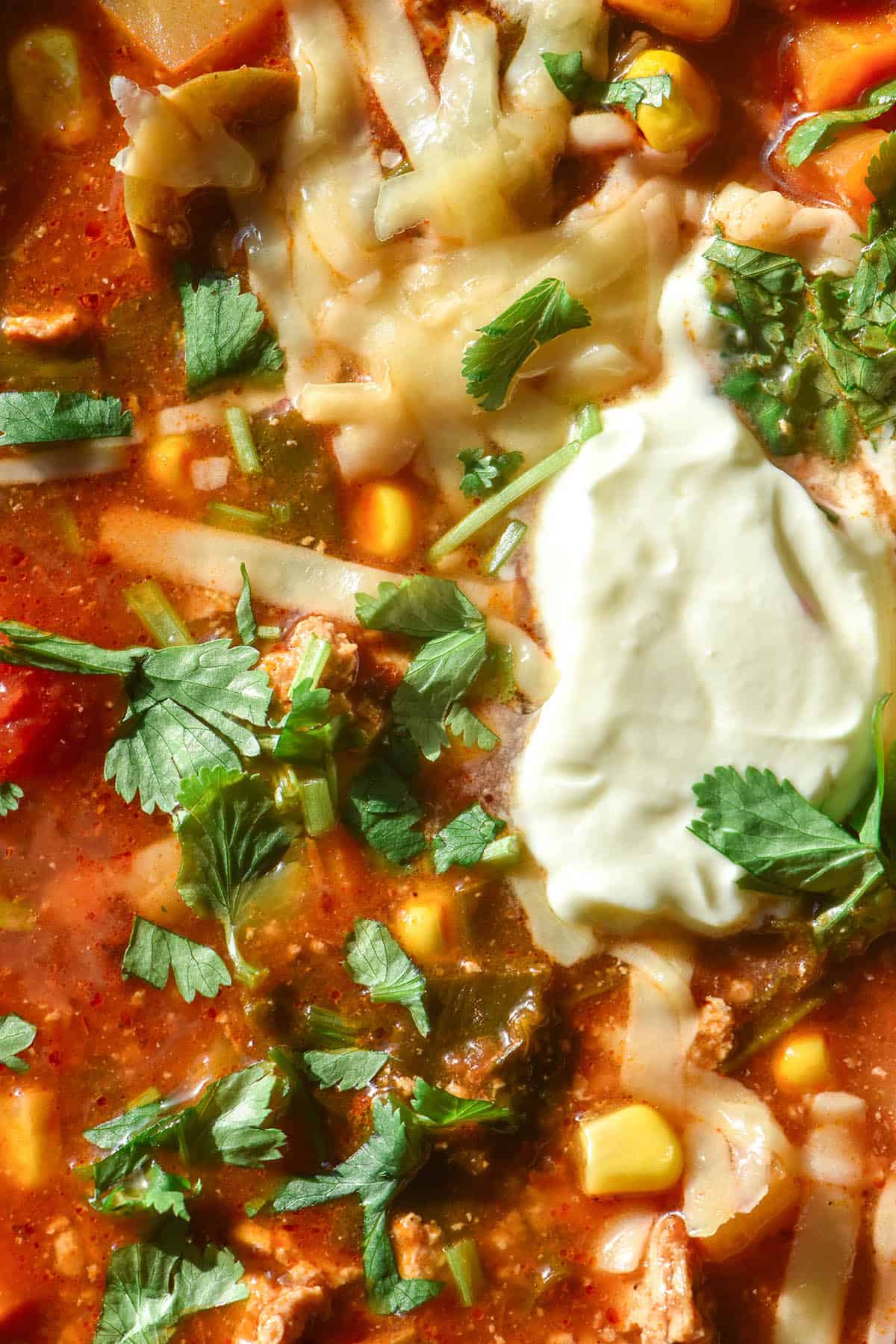
Can you make lactose free sour cream?
Yes, you can. Although I have seen a number of sites say it isn’t possible (and there is next to nothing on the science online) you can make lactose free sour cream at home.
To make lactose free sour cream, you’ll need to add lactase drops to cream (and maybe milk, more on this soon). After the mixture has been left for 24-48 hours, you can move on to the next time of making sour cream.
As we will discuss, you can make lactose free sour cream out of cream that is 35% fat and beyond. It takes a little more time on the bench than making ‘regular’ homemade sour cream would. This is because we have removed most (but not all) of the lactose. Lactose is what converts to lactic acid bacteria which helps culture and thicken our sour cream. As such, lactose free sour cream just takes a little longer to make.
Can’t I just add lactase to store bought sour cream?
Unfortunately not. Acidicity and cultures in the sour cream (or yoghurt) will kill off lactase enzymes before they can get to work. This is why we need to add the lactase to the non-acidic cream before we start culturing. The dairy is fermented AFTER adding the lactase, so you are working with lactose free dairy from the get go.
How much lactose do lactase drops remove from dairy products?
Did you know that lactose free milk and cream bought at the store has no real standard needed to achieve the label? One would assume that the milk or cream would need to test negative for lactose, but that is not the case. There is no standard for the lactose content of these products, nor do they have to mention how much lactase they added or how long they left it for.
So, when we are making lactose free cream, there likely remains some lactose in the cream. Lacteeze’s website says that the drops remove approximately 70-80% of the lactose in a product. You can improve the odds by adding more lactase drops and leaving them in the cream for longer (48+ hours) before making lactose free sour cream.
Something to note is that the process of culturing sour cream converts lactose to lactic acid bacteria. So, if you are working with cream that has had 80% of the lactose removed, the culturing process should remove even more lactose (how much, I can’t say).
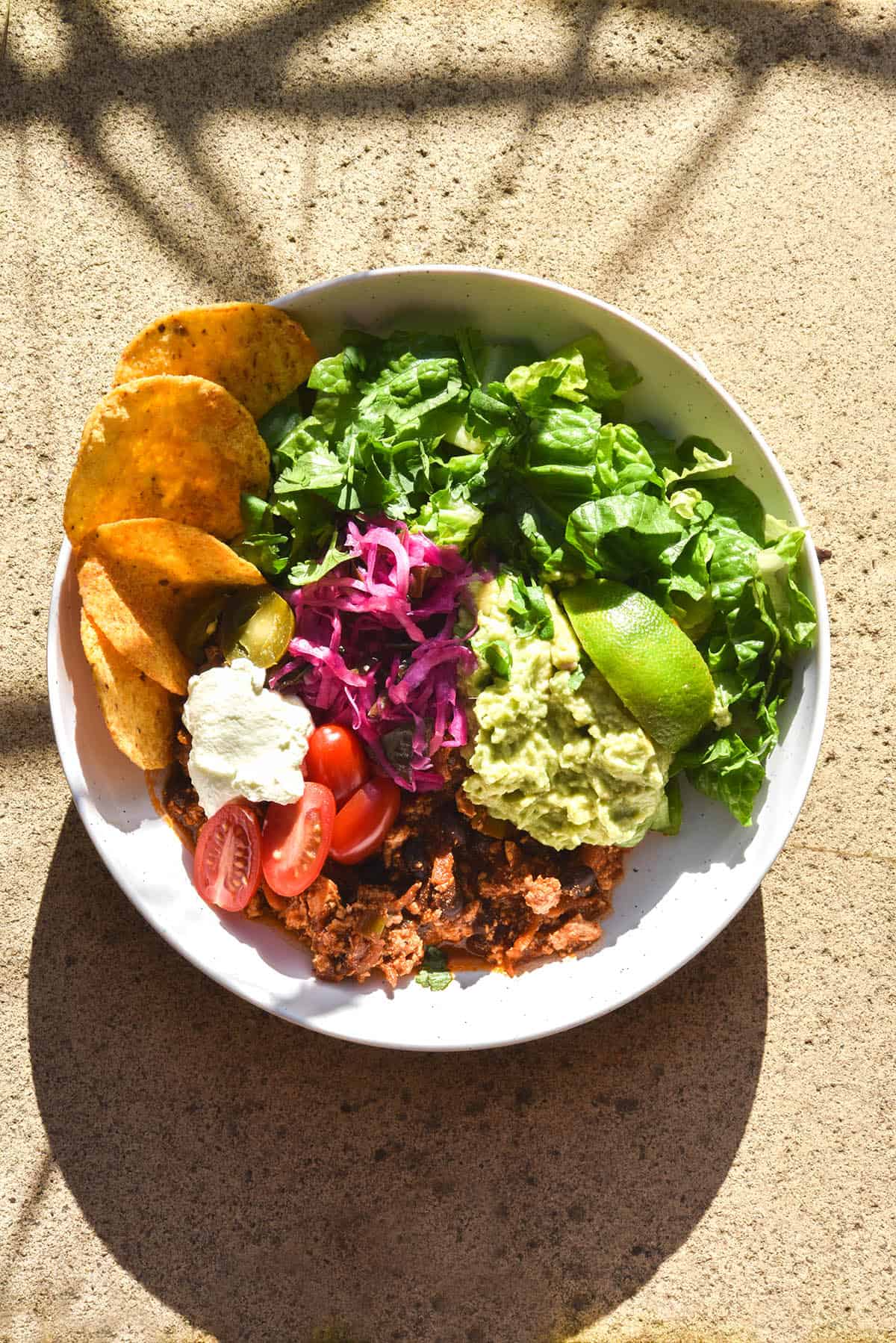
What sort of cream can I use to make sour cream?
I have tested this sour cream with 35% thickened cream (known as heavy cream in the USA) and 45% double cream.
In Australia, the full fat sour creams that I looked at are 45% fat, which means they are using the equivalent of double cream. However, research tells me that America really only commonly sells heavy cream, which is around 35-40% fat.
This recipe can be made with either thickened cream (heavy cream) at 35%+ fat or with double cream (45% fat). The double cream version requires 60ml milk (1/4 Australian cup) or else you end up with the beginning of butter once the acid is added.
I tried to test cream without any thickeners or other ingredients added. These days, unfortunately, those are hard to find. When I do get my hands on some I will test to ensure that sour cream can be made with both styles of cream.
TLDR:
- You can make lactose free sour cream with cream is 35% fat or more. The fat percentage is written on the back of the container, so ensure you are purchasing the right cream.
- The version using 45% fat cream is much thicker than the version using 35% fat cream. If you’re using this to make dip (say, my low FODMAP French onion dip) I would recommend sourcing cream with 45% fat, if you can.
- Sour cream using 35% fat cream (thickened cream or heavy cream) is thinner, but it should not be liquid. If it is, you haven’t fermented it for long enough.
- You cannot make lactose free sour cream with any cream that has a lower fat percentage than this. Don’t say I didn’t warn you – read the label!
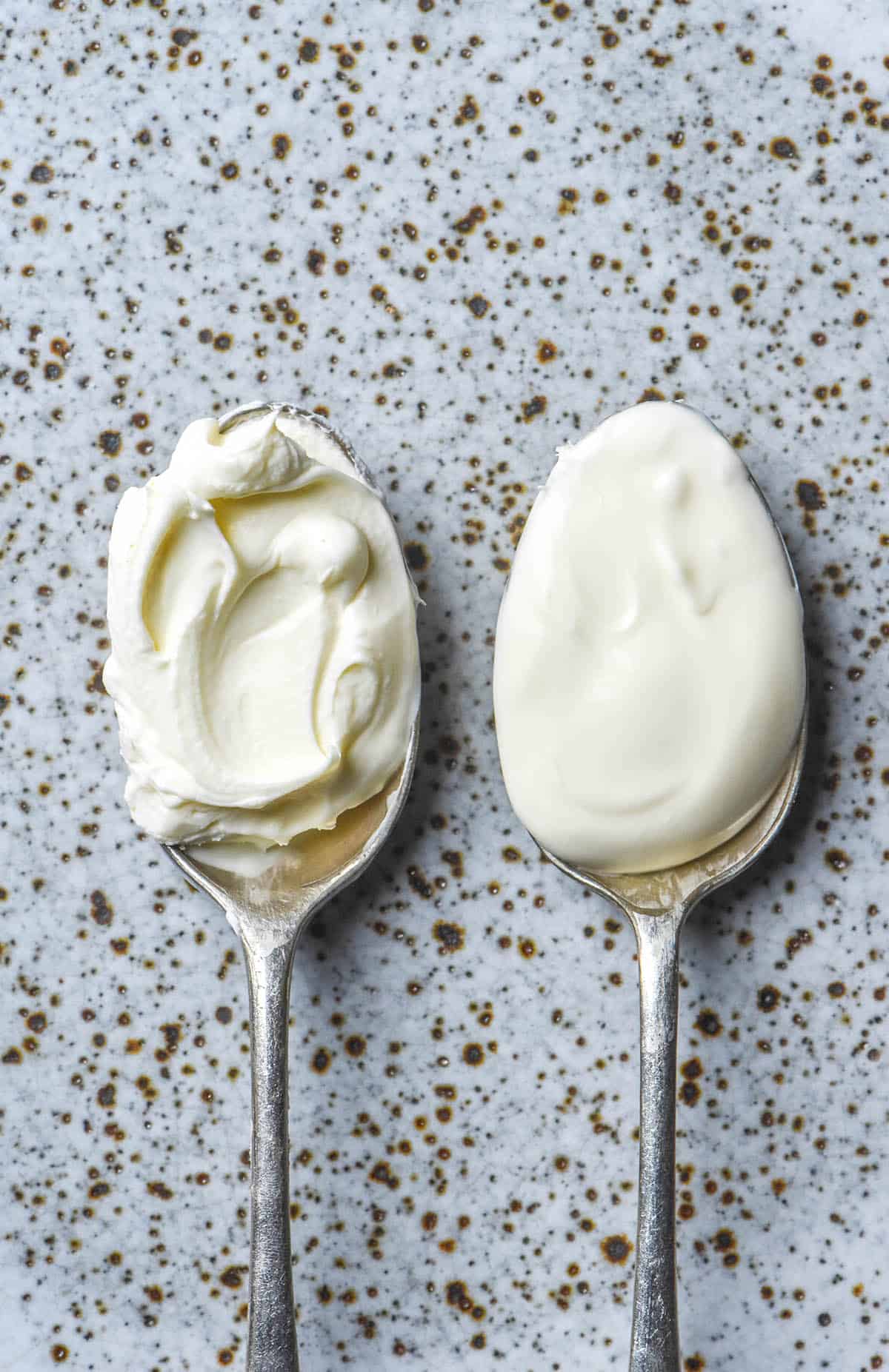
What I tested in the process of developing this lactose free sour cream recipe
I like to include a section on what I personally tested because I think it’s helpful when you are trying to make the recipe your own.
My first tests involved no milk, only lactose free double cream (45% fat) and vinegar. In my experience, the result mostly ended up too thick and almost like cream that had started to turn into butter. It had a gritty texture that wasn’t what I wanted.
My next tests involved adding the lactase to the 45% cream, but adding the milk separately. I also dabbled in adding more or less to the mixture, but I found that a lot of the end results were either a bit gritty or too runny. As a result, I have settled on 60ml milk as being the best amount for a non-gritty sour cream that still becomes nice and thick.
Next, I tested 35% thickened cream without milk. This version takes longer to ferment than the 45% fat version but it does work. In my experience, it will take about 48 hours on the bench in an Australian winter. I assume that fermentation occurs more quickly in warmer weather, as it does with proofing bread.
I tested salting my sour cream once finished and I found that it produced an odd flavour. Because lactase converts lactose to smaller sugar molecules, lactose free dairy can taste a bit sweeter. The sweet and salty combination didn’t work here, and I found that the sour cream didn’t really need the salt.
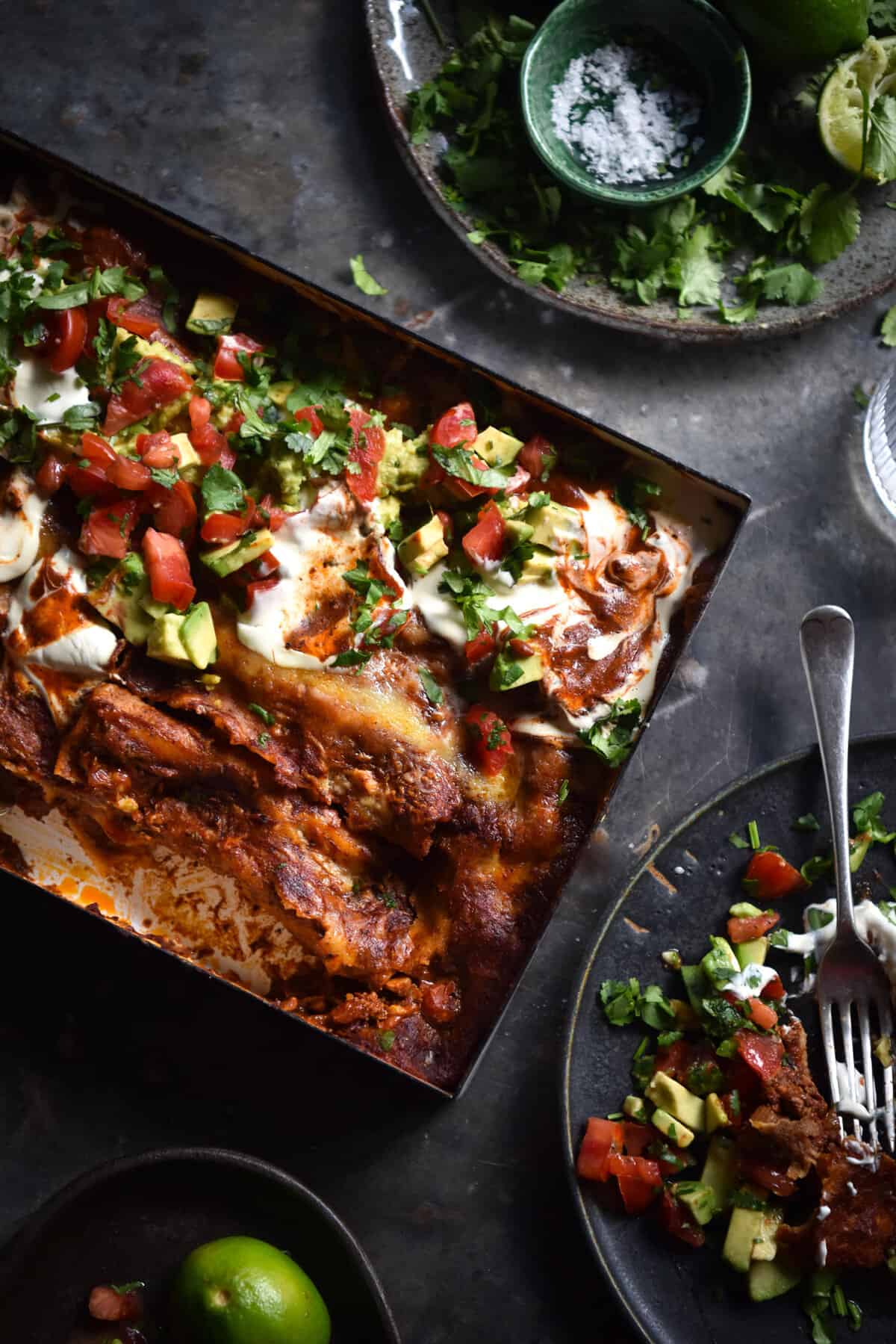
Tips for making lactose free sour cream
- Because lactose free dairy is sweeter than regular dairy, I find a longer fermentation (and thus, more funky flavours) tastes better. This is great because the 35% fat version takes longer to ferment, anyway.
- I find salt to taste a bit funny in this sour cream as it is sweeter than normal sour cream. Once it’s fermented, I think the tangy complexity works nicely without any salt added, anyway.
- You can’t rush the process with making your own lactose free sour cream. First, the lactase needs time to convert the lactose to sugars. Then, the mixture needs more time to ferment. Finally, it needs to chill in the fridge to finish firming up. All up, this process takes 3-4 days.
- Covering the sour cream with a piece of kitchen towel and an elastic band allows it to breathe and culture without anything getting in. I got much better flavour doing it this way than when I put a lid on.
- Yes, it needs to sit on the bench. For around two days. I know this might feel a little odd if you’re not used to leaving dairy out, but it is necessary and what makes the recipe work.

How do I know when my lactose free sour cream is ready?
Firstly, let me be very clear: the sour cream is ready when it is ready. You can’t rush this process. I daresay it will be quicker in summer and slower in winter, but I can only test in winter right now. I will update the post when it is summer in Australia.
It stands to reason, though, that hot and humid climates will ferment the cream at a faster rate. I recommend keeping your eyes on it, particularly if you are in a hot climate.
You will know that the lactose free sour cream is ready when it has thickened in the jar. I like to do a tilt test (and use a see through glass jar) every morning. If the cream is runny and about the same consistency as when you started, it is not ready. If the cream is obviously thickened and moves slowly in the jar, it is ready to refrigerate.
Also, do a taste test! a sour cream that has thickened might still benefit from some extra fermentation, flavour wise.
Keep in mind that the version with 45% fat cream will be thicker to begin with. I found that the 45% fat cream was thick in 24 hours but benefitted from 48 hours on the bench, flavour wise. The 35% fat cream needed a full two days to noticeably thicken. It then needed to be chilled overnight to see the final thickness of the product.
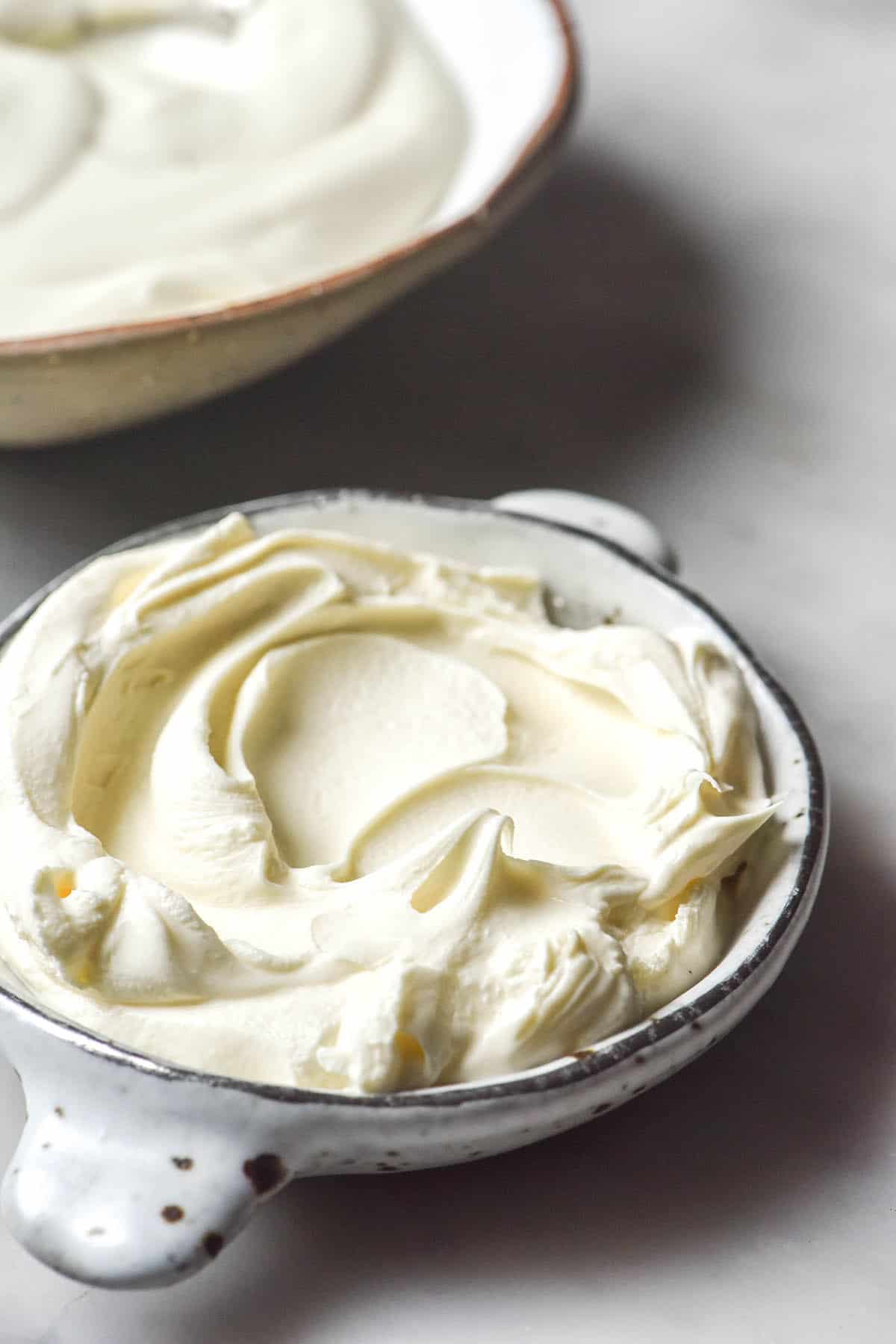
More lactose free dairy recipes
- Lactose free ricotta
- Lactose free cream cheese
- Lactose free cottage cheese
- Lactose free paneer
- Lactose free creme caramel
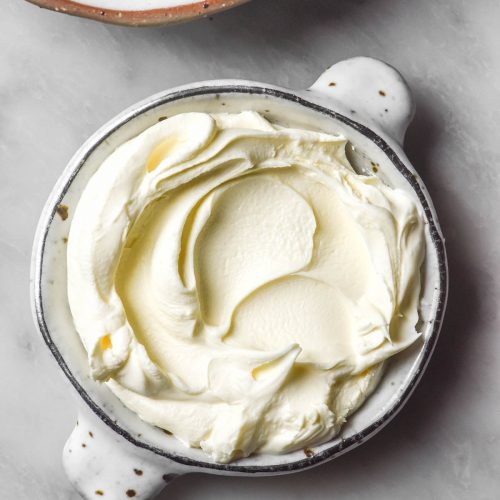
Lactose free sour cream
Ingredients
- 300 ml cream with 35-45% fat (thickened/heavy cream at 35% or double cream at 45%)
- 60 ml (1/4 cup)* milk (ONLY if you use cream with 45% fat)
- 10 drops of lactase you can experiment with more or less, it’s not an exact science
- 20 ml (1 tablespoon)* white vinegar
Instructions
- Add the lactase drops to your 35% cream (thickened cream/heavy cream). If you are using 45% double cream, add 60ml full fat milk. This will probably be too much liquid for the cream container, so pour it into a thoroughly clean medium size glass jar.
- Stir to combine then return to the fridge for 24-48 hours to allow the lactase enzyme to consume the lactose content of the dairy.
- If you haven't already, pour the cream into a clean, dry medium sized glass jar. Stir in the vinegar. Cover the jar with a piece of paper/kitchen towel secured with a rubber band.
- Leave the cream on the bench for 24-48 hours or until you can tip the jar to the side and see that it has thickened considerably. This will take longer for cream with less fat – it took my 35% fat cream batch around 48 hours in Australian winter. I suspect that hot kitchens and climates will culture sour cream at a faster pace than cold kitchens and climates, so keep an eye on it.
- Check on your sour cream after 24 hours. Open it, stir it and taste it. If it hasn’t thickened or doesn’t taste soured enough, secure the paper towel back over the cream and allow to sit for another 24 hours. Repeat again – stir and taste.
- Continue until you can tip the cream in the jar and it is visibly thickened. It might not be quite as thick as store bought, but it will thicken further in the fridge.
- When you are happy with the taste and texture, transfer the covered jar to the fridge overnight to firm up.
- Your lactose free sour cream is now ready to use!
Notes
- Read the notes in the body of the post for best results.
- The lower the fat percentage of the cream, the longer it will take to thicken. 35% fat cream (thickened/heavy cream) will make more of a yoghurt consistency sour cream, whereas 45% sour cream will make thick sour cream that holds firm on the spoon.
- Sour cream should ferment more quickly in summer and slower in winter.
- Because lactose free dairy is sweeter than regular dairy, I find a longer fermentation (and thus, more funky flavours) tastes better. This is great because the 35% fat version takes longer to ferment, anyway.

No Comments